Djokovic once again discussed how Federer and Nadal’s retirements have impacted him, struggling through tough matches as his body sends warning signs.
Djokovic recently reflected on how difficult it has been to shift his main rivals from Federer and Nadal to younger players. Over the past twenty years, the “Big Three” have ruled men’s tennis, amassing a total of 66 Grand Slam trophies.
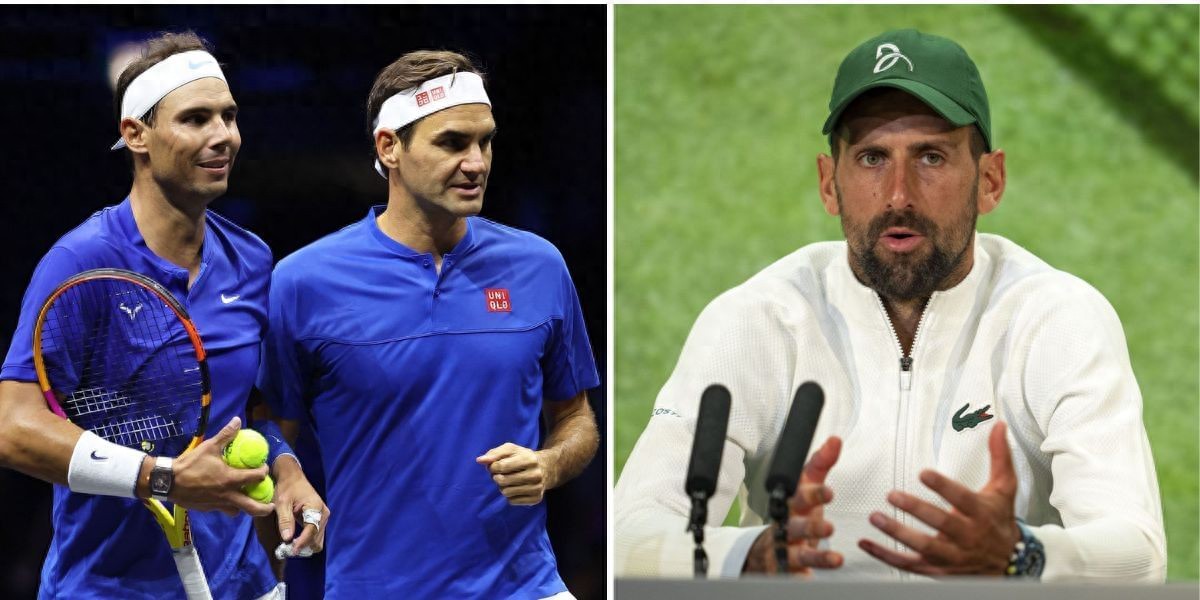
Federer retired in 2022, followed by Nadal and Andy Murray last year. Since then, Djokovic has developed new thrilling rivalries with the current top two players in the world rankings — Jannik Sinner and Carlos Alcaraz.
During an appearance on the podcast “On Purpose with Jay Shetty,” the Serbian legend explained why witnessing his most important rivals replaced by the younger generation has been a difficult experience.
“Those battles truly shaped who I am today — both as a player and as a person. I’m very grateful for everything we went through together. Now that things have changed, it’s been a unique feeling for me. Because over the past year or two, Federer, Nadal, and Murray — my most significant opponents — have all retired, and I feel like a part of me has gone with them,” Djokovic said.
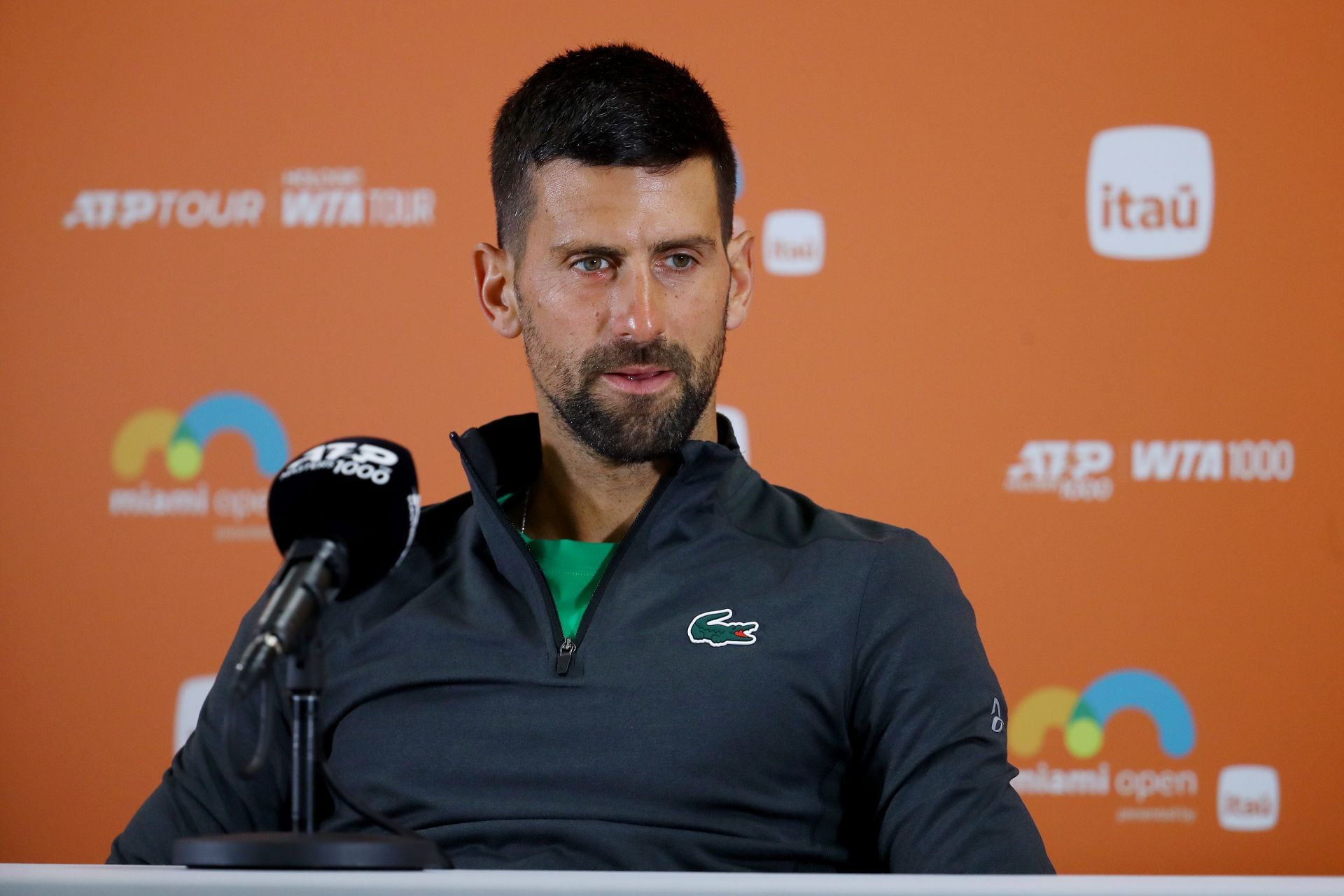
“I thought shifting my focus away from them to new main rivals wouldn’t be hard, but it has been, because for 20 years I was used to those names, those people, those faces. Now new faces are emerging, which is normal and inevitable for the evolution of our sport.”
However, the 38-year-old veteran understands reality and strives to accept it while continuing to chase more titles, despite having already achieved nearly unbelievable success.

At the 2012 Australian Open, Djokovic and Nadal delivered the longest Grand Slam final in history. Considered one of the most thrilling matches ever, it lasted 5 hours and 53 minutes, with Djokovic ultimately winning 5-7, 6-4, 6-2, 6-7(5), 7-5.
In the same podcast episode, host Jay Shetty asked Djokovic who was the toughest opponent physically. Djokovic replied, “Definitely Nadal. Facing him was pure torture. That 2012 Australian Open final was nearly six hours of grueling battle, and I won it in the fifth set. I remember during the trophy ceremony, we stood listening to the sponsor’s speech, and at one point, we both almost bent over holding our knees.”
“Seeing his legs shaking, mine were shaking too. Someone noticed and brought us two chairs and water. When I returned to the locker room and took off my shoes, I saw both socks were soaked with blood. I didn’t feel anything at the time because the adrenaline on court helped me push through all the pain.”
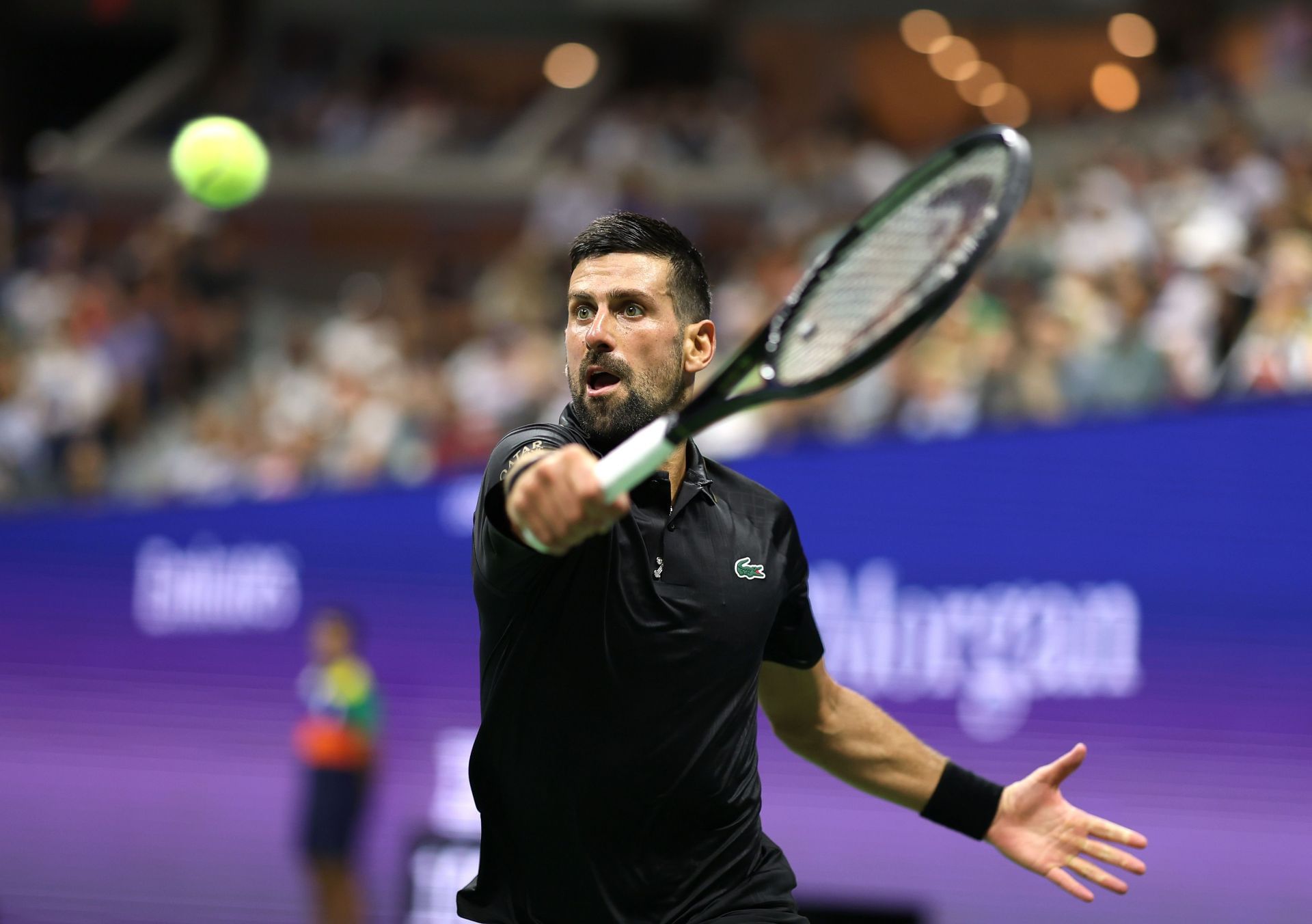
At this year’s US Open, after six weeks of rest, Djokovic returned to competition looking at times like a warrior battling his own body. Although he has reached three Grand Slam semifinals this year and remains among the elite, he admitted the physical toll of five-set matches is increasingly heavy. Now advancing to the third round in New York, he openly acknowledged his physical struggles while continuing to fight on.
At the US Open, Djokovic once again faced a tough test. In the second round against American qualifier Zachary Svajda, he lost the first set but gradually turned the match around with resilience and precision, eventually winning 6-7(5), 6-3, 6-3, 6-1. This extended his unbeaten streak in the second round at New York and marked his 19th trip to the US Open third round.

However, behind the scoreline lies a deeper truth: Djokovic’s “invincible aura” is gradually being challenged by age. Long rallies and physical wear now test his endurance like never before, and the Serbian himself acknowledges this burden.
“The past few years have definitely been a bit different for me,” Djokovic said after the match. “I get worn down more easily than before, and I have to invest more effort off the court in recovery to keep performing at the highest level on the court for as long as possible.”
In the first round, Djokovic had to call the ATP physiotherapist to rewrap his bandage after bleeding from his right toe. Earlier, on court, he twisted and stretched his body, even pulling his racket behind his head as if trying to breathe deeper to keep going. Now entering the US Open third round, the 38-year-old still refuses to yield to pain. His body may be reminding him that time is unforgiving, but his voice only conveys determination. The pursuit of his 25th Grand Slam title continues, and every step feels like a battle against time itself.
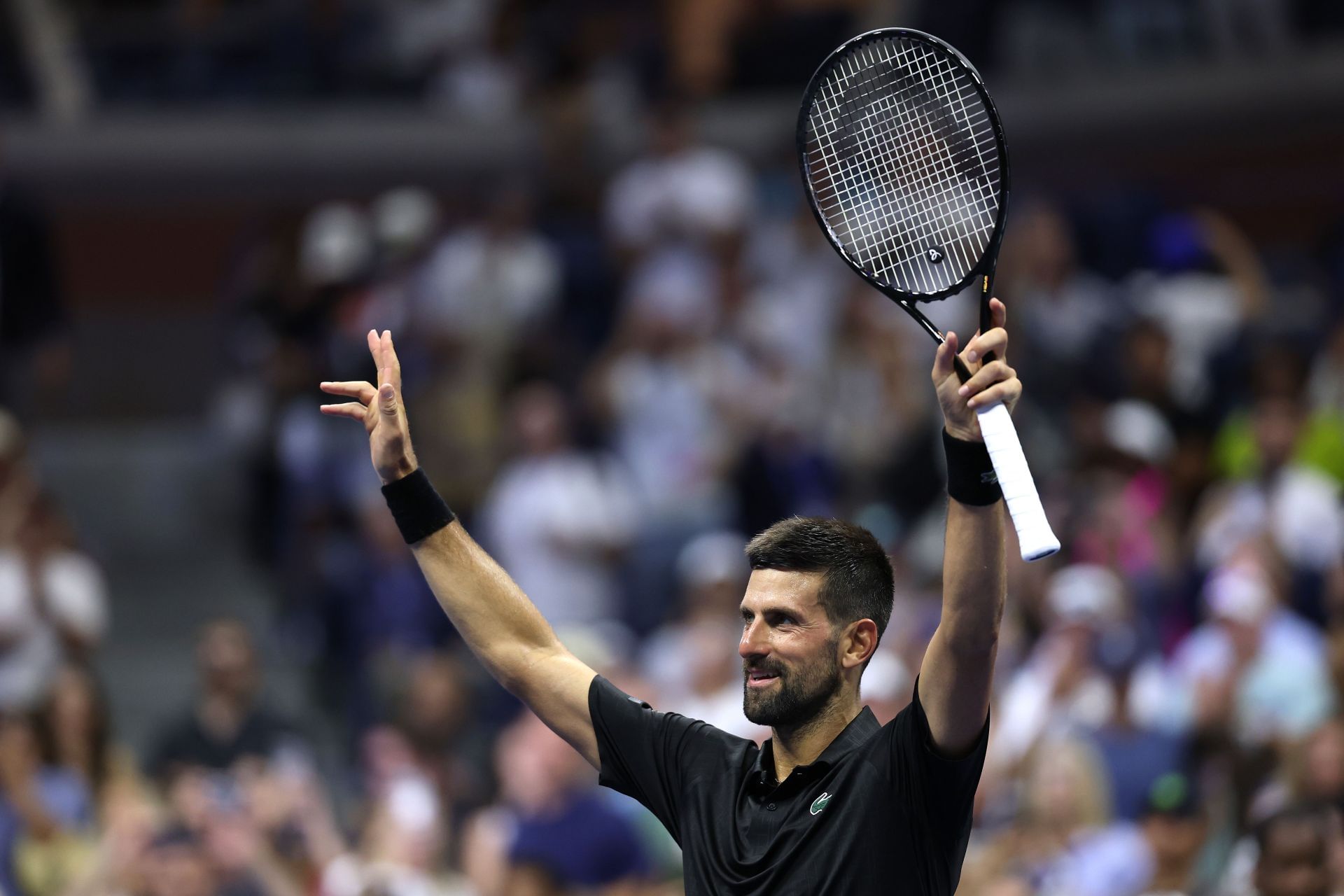
Djokovic’s journey at the US Open has once again become a comprehensive test of body, will, and spirit. Facing American qualifier Svajda, he started unsteadily, committing 14 unforced errors in the first set and falling behind 1-3 in the third set.
“Honestly, my performance wasn’t great,” Djokovic admitted. “I wasn’t satisfied with my tennis in the first half of the match, but I have to praise Zach; he played very high-quality tennis. Unfortunately, he got injured late in the second set, but he still finished the match, which is commendable. Obviously, he couldn’t serve like at the start anymore, and I wish him all the best.”
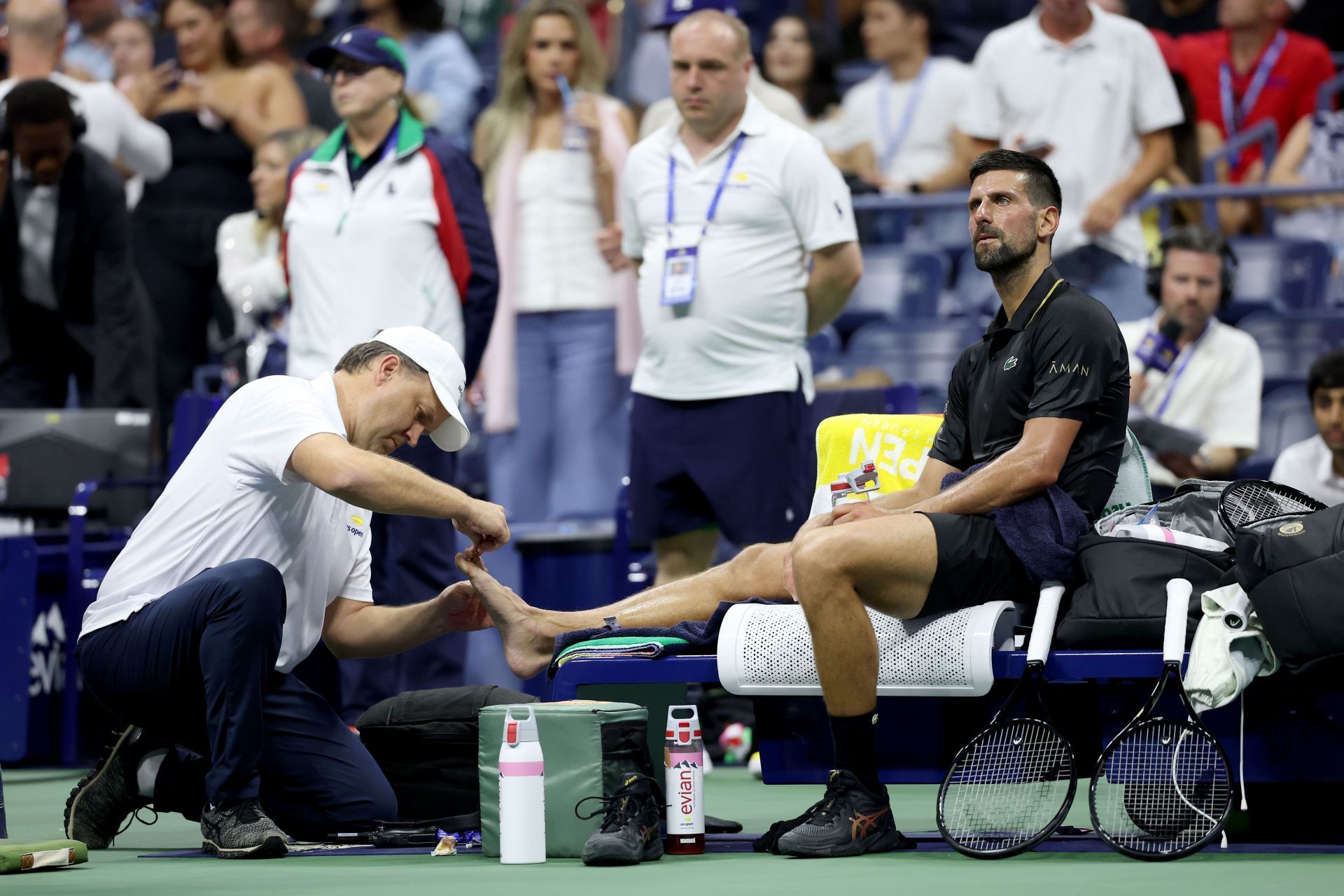
Despite the tough battle, this win set a new milestone. It marked the 75th time in his career Djokovic reached the third round of a Grand Slam, surpassing Federer’s record of 74. He also equaled Federer’s record of 191 hard-court Grand Slam wins.
These remarkable stats further cement his towering legacy. Djokovic’s overall Grand Slam record now stands at 394 wins and 54 losses, with a 17-3 record in Grand Slams this season. He continues to burn with passion, chasing an unprecedented 25th Grand Slam title in history.(Source: Tennis Home, Author: Huohua)







 Links
Links
 Contact
Contact
 App
App


